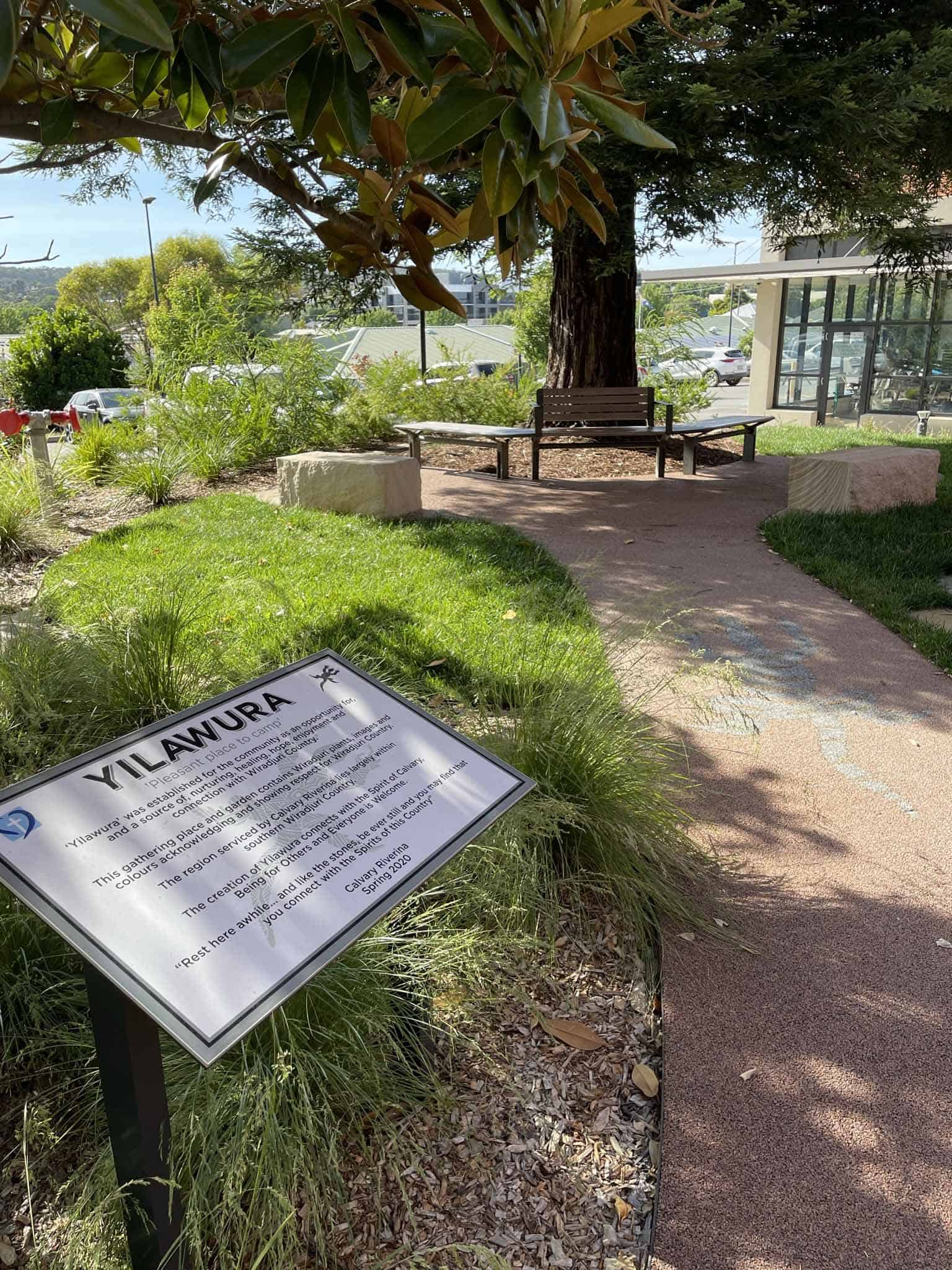Palliative Care Australia1 believes quality end of life care can only be realised when it is culturally appropriate to the needs of the individual and their family.
Australian First Nations people, comprise of hundreds of cultural groupings with distinct languages and histories, as such, it can be difficult for non-Indigenous healthcare workers to successfully provide culturally appropriate end of life care.
To provide culturally appropriate services, it is essential healthcare providers engage with local country Elders and Aboriginal Liaison Officers to guide and support end of life care.1
For First Nations families experiencing an end of life journey, the gathering of family and community members is a mark of respect. The gathering is associated with the person’s position within the community.2 Therefore, it is important to ensure an appropriate large enough space to support participation in this cultural tradition. At Calvary Riverina, it was identified that there was not a large enough space for families to come together. The family room, typically used for family meetings, did not provide a culturally aware environment, nor did the space cater for larger extended families to gather and grieve.

As a result, an outdoor gathering place called Yilawura – ‘Pleasant place to camp’ was proposed. The space was designed in consultation with local Elders and a young Aboriginal artist. Yilawura incorporated existing trees but featured Wiradjuri Country native plants, seating for 12 people, access steps, disability access pathway, rock features, and interpretative and directional signage. Yilawura has provided a space for healing, hope, nurturing and a connection to Wiradjuri Country.
Australian First Nations people are underrepresented in accessing palliative care services.3 This reluctance to engage in the western medical model of healthcare stems from a number of factors, including a lack of culturally appropriate services. However, with the right resources, training and awareness, we can hope to alleviate some of the barriers to providing culturally informed support to First Nations people and their families accessing end of life care.
References
1 Palliative Care Australia (2015). Improving access to quality care at the end of life for Aboriginal and Torres Strait Islander Australians Mission Statement, Care at the end of life of Aboriginal and Torres Strait Islander Australians.
2 Australian Institute of Health and Welfare (2021). Palliative care services in Australia [web report]. Retrieved from: https://www.aihw.gov.au/reports/palliative-care-services/palliative-care-services-in-australia/contents/summary
3 Palliative Care Outcomes Collaboration (2018). Patient outcomes in palliative care: national report July-December 2017. Wollongong, NSW: Palliative Care Outcomes collaboration.
Authors:
Ms Brooke Wichman RN BN is Nursing Unit Manager in the Rehabilitation and Palliative Care unit at Calvary Riverina Private Hospital
Dr Krishna Lambert RN PhD is Assistant Director of Clinical Services at Calvary Riverina Private Hospital








